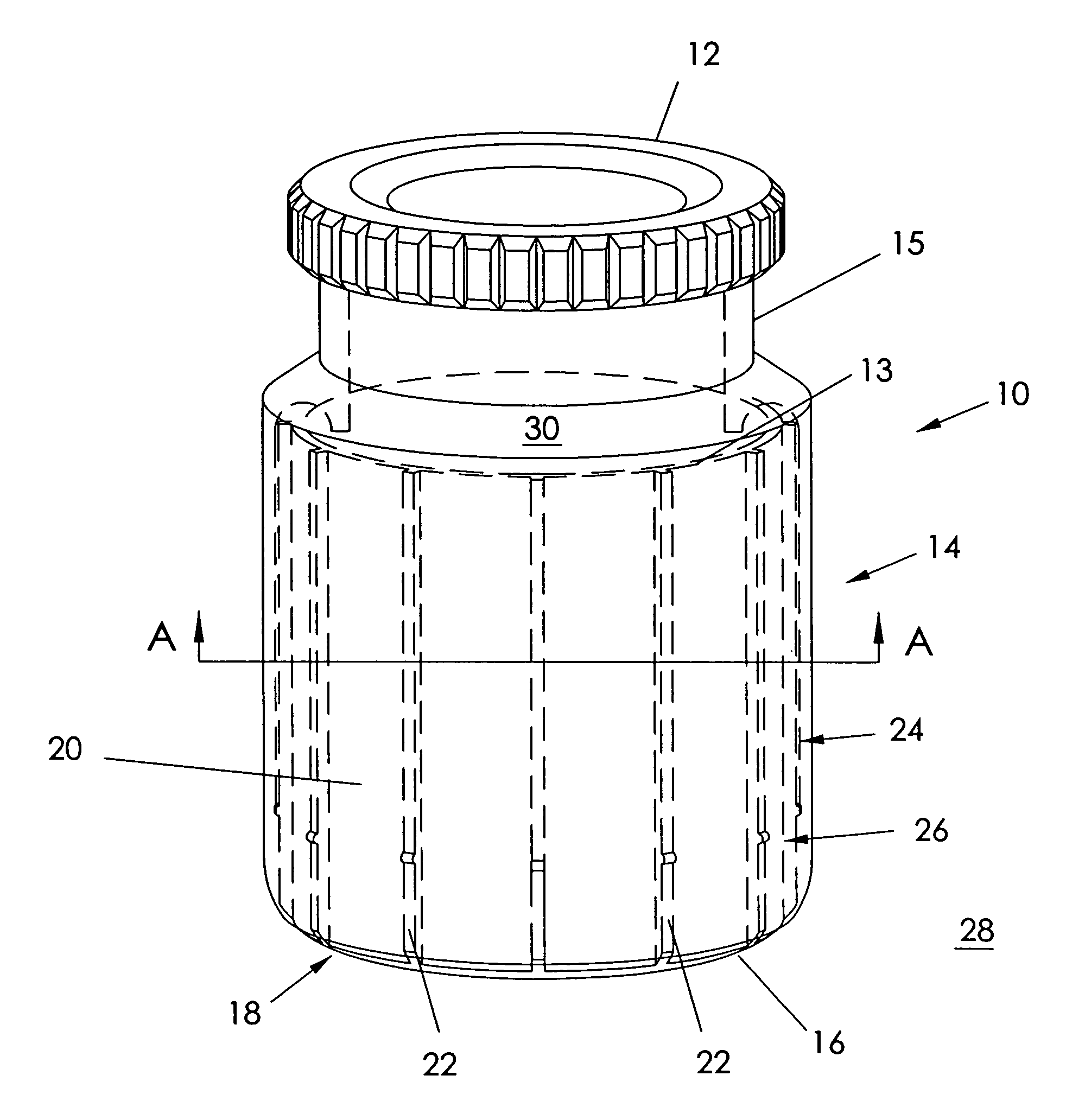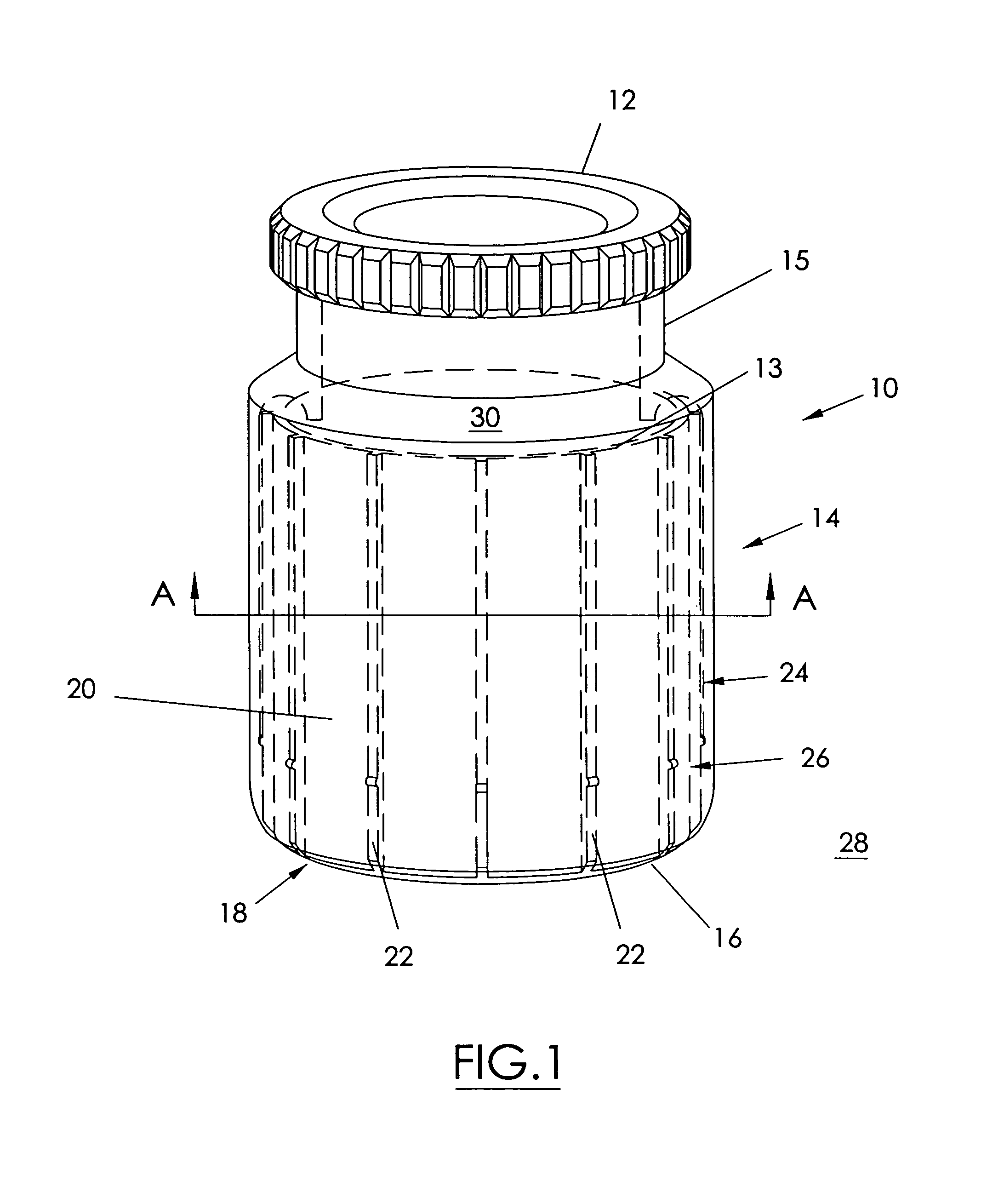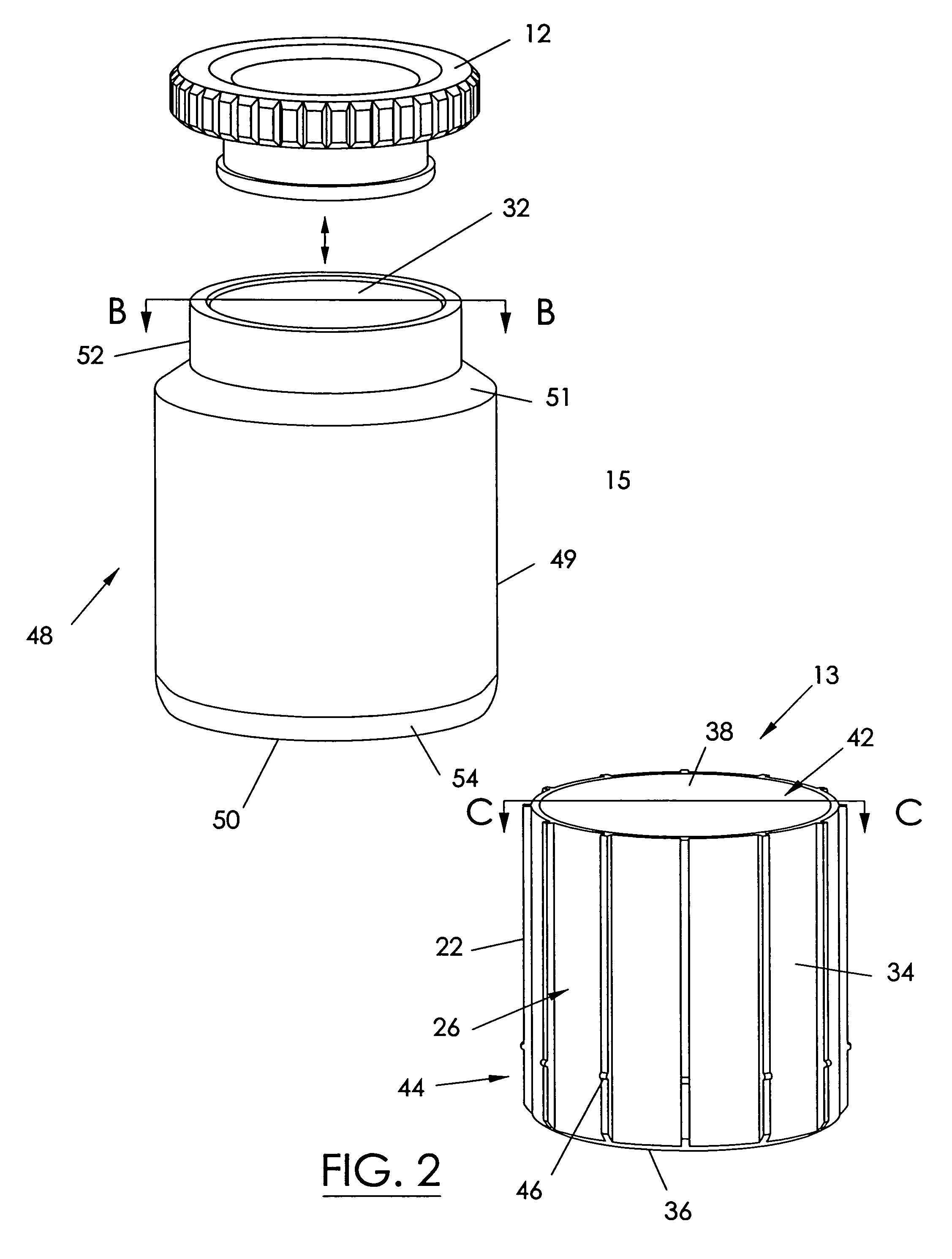Two part candle container
a candle container and two-part technology, applied in the direction of containers, fatty acid production, heating/cooling arrangements, etc., can solve the problems of the efficiency of combustion and the problem and achieve the effect of central placement of wax and wick in the vessel and convenient placement of wax and wick
- Summary
- Abstract
- Description
- Claims
- Application Information
AI Technical Summary
Benefits of technology
Problems solved by technology
Method used
Image
Examples
Embodiment Construction
[0026]Referring to FIG. 1, a candle container 10 includes a cover 12 for covering a body 14 that is adapted to hold poured wax (not shown). The body 14 comprises two parts, namely an interior holder 13 and an exterior shell 15. A series of vents 16 extend around the periphery of a base 18 of the container 10 to supply intake air to a series of respective channels 20. Each of the channels 20 is defined as a passageway with walls consisting of a pair of adjacent splines 22, an interior surface 24 of the shell 15, and an exterior surface 26 of the bolder 13. The channels 20 extend from the vents 16 to the top of the holder 13, such that ambient air 28 is in fluid communication through the channels 20 to an interior 30 of the container 10. It should be noted that the vents 16 are placed below a mouth 32 (see FIG. 2) of the container 10.
[0027]Referring to FIG. 2, the interior holder 13 has a cylindrical sidewall 34, such as but not limited to of circular cross section, with a closed base...
PUM
 Login to View More
Login to View More Abstract
Description
Claims
Application Information
 Login to View More
Login to View More - R&D
- Intellectual Property
- Life Sciences
- Materials
- Tech Scout
- Unparalleled Data Quality
- Higher Quality Content
- 60% Fewer Hallucinations
Browse by: Latest US Patents, China's latest patents, Technical Efficacy Thesaurus, Application Domain, Technology Topic, Popular Technical Reports.
© 2025 PatSnap. All rights reserved.Legal|Privacy policy|Modern Slavery Act Transparency Statement|Sitemap|About US| Contact US: help@patsnap.com



